RESOLUTION AS SYMBOLIC CLARITY
Screen Resolution – From 144p to 8K
Screen resolution is more than a technical specification. It defines how visual information is structured, perceived, and emotionally processed. Resolution refers to the number of pixels displayed on a screen, measured by width and height. Higher resolution means more pixels, which typically results in sharper, more detailed images. The “p” in resolution stands for progressive scan, meaning each frame is drawn in full rather than interlaced. From 144p to 8K, resolution affects not only image quality but also bandwidth, storage, and user experience.
It shapes how we consume media, interpret detail, and engage with digital environments. Resolution influences emotional immersion, cognitive load, and visual fatigue. It determines how much symbolic information can be carried in each frame. Lower resolutions prioritize speed and accessibility. Higher resolutions prioritize clarity and realism.
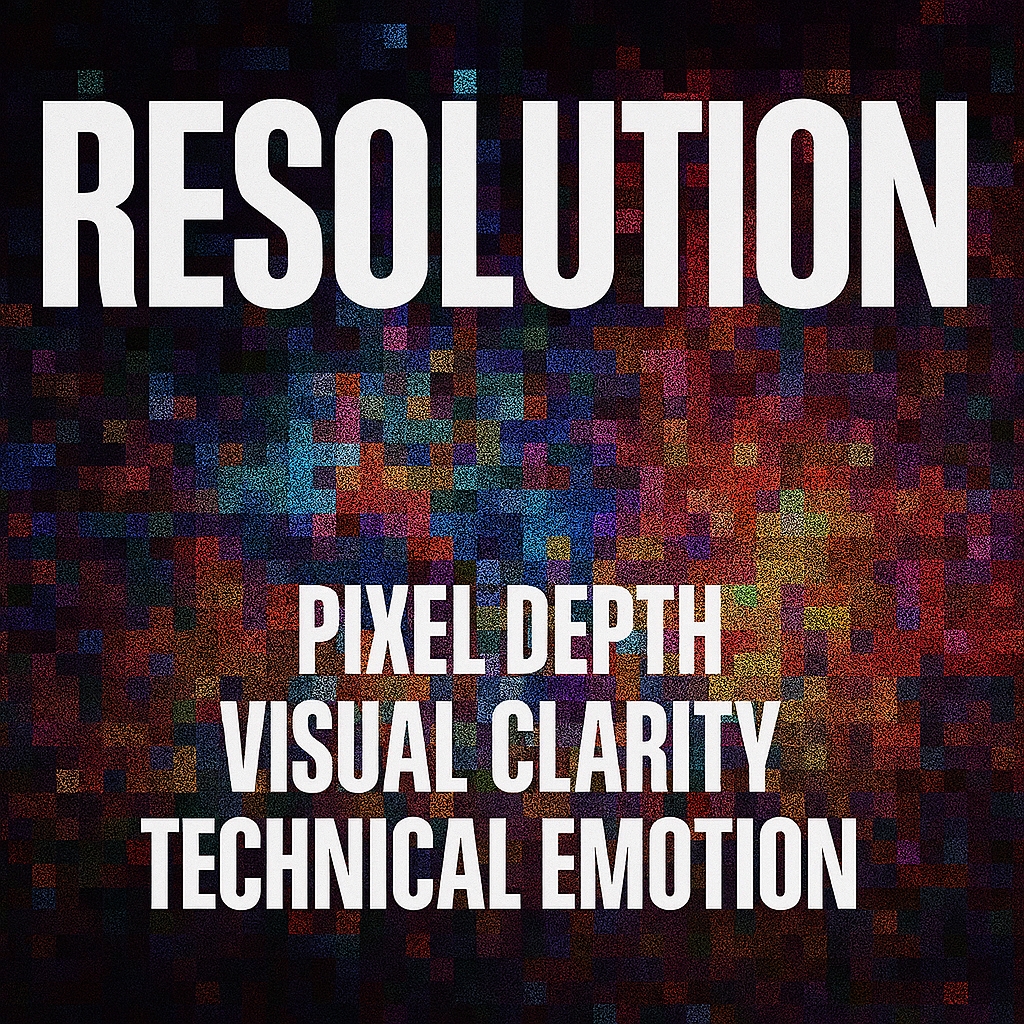
144P – MINIMALIST VISUAL FUNCTION
144p resolution displays 256 pixels horizontally and 144 pixels vertically. It is the lowest standard resolution used in digital video. This format is often used in low-bandwidth environments or legacy devices. The image appears pixelated and lacks fine detail. Text is difficult to read, and facial features are often indistinct. 144p is suitable for basic motion recognition but not for immersive viewing.
It requires minimal data and loads quickly on slow connections. The emotional impact is limited due to lack of clarity. Viewers may feel disconnected or frustrated by the visual noise. 144p is often used for previews, thumbnails, or emergency streaming. It prioritizes accessibility over aesthetics. The format is not ideal for storytelling or symbolic depth. It is functional but not expressive. 144p represents the bare minimum of digital visibility. It is a reminder of how resolution shapes perception.
TECHNICAL PROFILE – 144P
| Attribute | Value |
|---|---|
| Pixel dimensions | 256 × 144 |
| Total pixels | 36,864 |
| Aspect ratio | 16:9 |
| Bandwidth requirement | Very low |
| Use case | Thumbnails, low-speed video |
240P – BASIC MOTION CLARITY
240p resolution displays 426 pixels horizontally and 240 pixels vertically. It offers slightly more detail than 144p but remains visually coarse. This format was common in early mobile video and low-end streaming. It allows basic recognition of shapes, movement, and color. Text remains difficult to read, and fine detail is still lost. 240p is often used for previews or low-priority content. It requires minimal bandwidth and loads quickly. The emotional engagement is limited by visual distortion. Viewers may experience cognitive strain when interpreting content. 240p is not suitable for professional media or educational material.
It prioritizes speed and accessibility over clarity. The format is useful in constrained environments. It represents a transitional step toward usable resolution. 240p is functional but not immersive. It allows motion but not meaning. The format is a compromise between visibility and efficiency.
TECHNICAL PROFILE – 240P
| Attribute | Value |
|---|---|
| Pixel dimensions | 426 × 240 |
| Total pixels | 102,240 |
| Aspect ratio | 16:9 |
| Bandwidth requirement | Very low |
| Use case | Mobile previews, low-end video |
360P – ENTRY-LEVEL VIEWING
360p resolution displays 640 pixels horizontally and 360 pixels vertically. It is considered the minimum for watchable video. This format allows basic recognition of faces, objects, and text. It was widely used in early YouTube and mobile streaming. 360p offers moderate clarity and reduced pixelation. It requires low bandwidth and is compatible with most devices. The emotional impact is limited but functional. Viewers can follow narrative and recognize symbolic cues. 360p is suitable for casual viewing and low-resolution archives. It is not ideal for professional or cinematic content.
The format balances accessibility and usability. It allows storytelling but not full immersion. 360p is often used in constrained environments. It represents the threshold of visual coherence. The format is practical but not expressive. It enables recognition but not resonance.
TECHNICAL PROFILE – 360P
| Attribute | Value |
|---|---|
| Pixel dimensions | 640 × 360 |
| Total pixels | 230,400 |
| Aspect ratio | 16:9 |
| Bandwidth requirement | Low |
| Use case | Mobile streaming, casual viewing |
480P – STANDARD DEFINITION
480p resolution displays 854 pixels horizontally and 480 pixels vertically. It is considered standard definition (SD) in digital video. This format allows clear recognition of faces, text, and movement. It was the dominant format for DVDs and early digital broadcasts. 480p offers moderate clarity and acceptable detail. It supports basic emotional engagement and narrative structure. Viewers can follow dialogue, expression, and visual cues. 480p is suitable for educational content, casual entertainment, and legacy archives. It requires moderate bandwidth and is widely supported.
The format balances clarity and efficiency. It allows storytelling with symbolic coherence. 480p is not ideal for high-detail or immersive content. It represents the baseline of professional usability. The format is functional and emotionally accessible. It enables recognition, rhythm, and response.
TECHNICAL PROFILE – 480P
| Attribute | Value |
|---|---|
| Pixel dimensions | 854 × 480 |
| Total pixels | 409,920 |
| Aspect ratio | 16:9 |
| Bandwidth requirement | Moderate |
| Use case | SD video, education, legacy media |
720P – THE THRESHOLD OF HIGH DEFINITION
720p resolution displays 1280 pixels horizontally and 720 pixels vertically. It is the entry point into high-definition (HD) video. This format offers clear recognition of facial features, text, and environmental detail. It became standard for early HD broadcasts, YouTube HD, and mid-tier streaming. 720p allows for emotional engagement and narrative immersion.
Viewers can follow subtle expressions and symbolic cues. The format balances clarity with bandwidth efficiency. It is suitable for education, entertainment, and live streaming. 720p supports cinematic rhythm and visual coherence. It is widely compatible across devices and platforms. The emotional impact is moderate but reliable. 720p enables storytelling with symbolic texture. It is not ideal for large screens or professional editing. The format represents the baseline of immersive clarity. It allows viewers to feel present without overwhelming data.
TECHNICAL PROFILE – 720P
| Attribute | Value |
|---|---|
| Pixel dimensions | 1280 × 720 |
| Total pixels | 921,600 |
| Aspect ratio | 16:9 |
| Bandwidth requirement | Moderate |
| Use case | HD streaming, education, live video |
1080P – FULL HIGH DEFINITION
1080p resolution displays 1920 pixels horizontally and 1080 pixels vertically. It is known as Full HD and became the global standard for high-quality video. This format offers sharp detail, smooth motion, and rich color. It supports cinematic storytelling, professional editing, and immersive viewing. 1080p is widely used in Blu-ray discs, broadcast television, and digital cinema. It allows viewers to engage emotionally with subtle visual cues. The format supports symbolic framing and narrative precision.
Text is crisp, and facial expressions are clearly visible. 1080p balances performance and quality across devices. It requires more bandwidth than 720p but remains efficient. The emotional impact is high due to visual clarity. 1080p is suitable for large screens and detailed content. It enables realism without excess. The format is stable, expressive, and widely adopted. It represents the gold standard of HD video.
TECHNICAL PROFILE – 1080P
| Attribute | Value |
|---|---|
| Pixel dimensions | 1920 × 1080 |
| Total pixels | 2,073,600 |
| Aspect ratio | 16:9 |
| Bandwidth requirement | High |
| Use case | Blu-ray, broadcast, digital cinema |
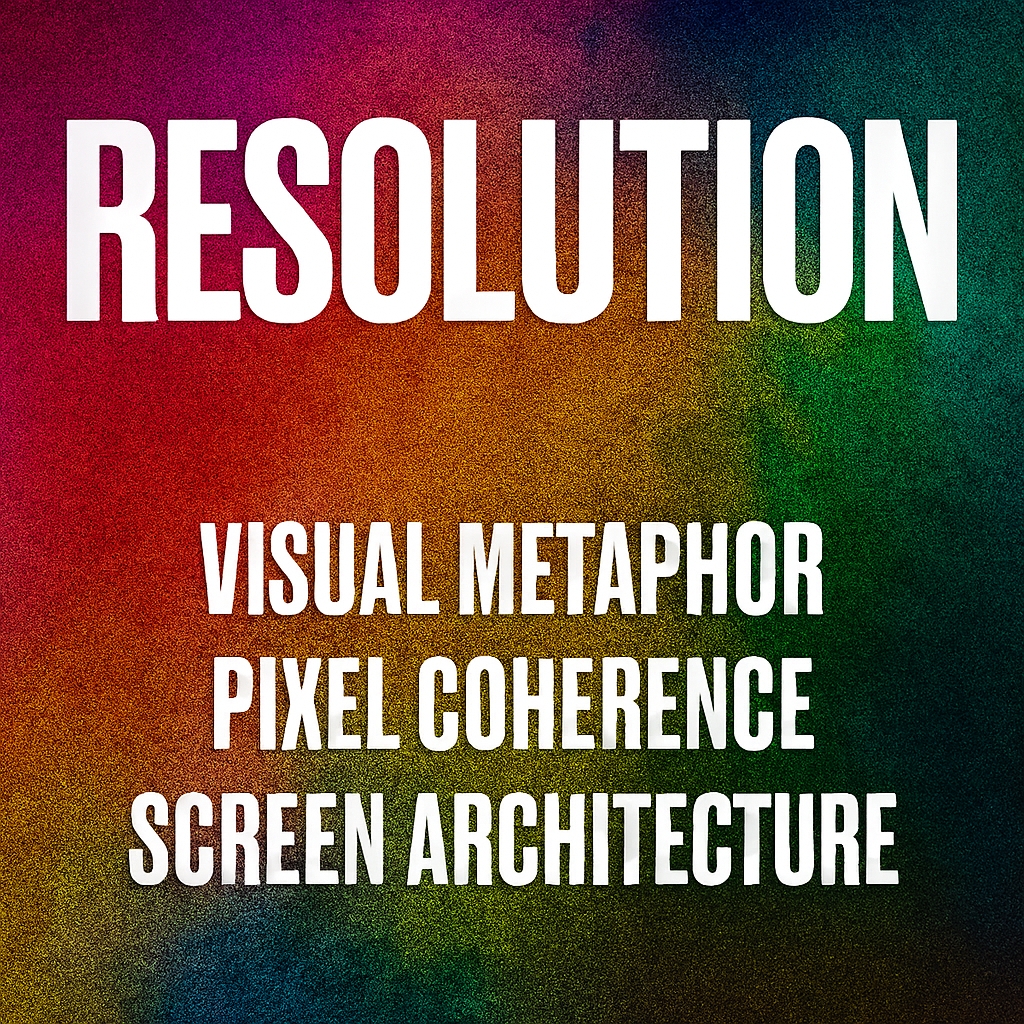
1440P – QUAD HIGH DEFINITION
1440p resolution displays 2560 pixels horizontally and 1440 pixels vertically. It is also known as QHD or Quad HD. This format offers four times the resolution of 720p. It is commonly used in gaming monitors, high-end smartphones, and professional displays. 1440p provides exceptional clarity and depth. It allows for detailed editing, immersive gameplay, and symbolic precision.
The format supports emotional realism and visual nuance. Text is razor-sharp, and motion is fluid. 1440p requires significant bandwidth and processing power. It is ideal for users who prioritize detail and responsiveness. The emotional impact is elevated due to visual fidelity. 1440p enables symbolic layering and narrative complexity. It is not yet universal but gaining popularity. The format bridges HD and ultra-HD experiences. It represents a commitment to clarity without excess. 1440p is expressive, efficient, and emotionally resonant.
TECHNICAL PROFILE – 1440P
| Attribute | Value |
|---|---|
| Pixel dimensions | 2560 × 1440 |
| Total pixels | 3,686,400 |
| Aspect ratio | 16:9 |
| Bandwidth requirement | High |
| Use case | Gaming, editing, premium displays |
2K – CINEMATIC PRECISION
2K resolution displays 2048 pixels horizontally and 1080 pixels vertically. It is a professional format used in digital cinema. Unlike 1080p, 2K uses a slightly wider aspect ratio for theatrical projection. This format supports high-detail editing, color grading, and visual effects. 2K offers cinematic clarity and emotional depth. It allows for symbolic framing and immersive storytelling. The format is used in film production, post-processing, and theatrical distribution. 2K requires robust hardware and bandwidth.
It is not common in consumer devices but standard in professional workflows. The emotional impact is high due to visual precision. 2K enables realism, symbolism, and narrative control. It supports large-scale projection without pixelation. The format is stable, expressive, and industry-approved. 2K represents the professional threshold of cinematic resolution. It allows filmmakers to shape emotion through detail.
TECHNICAL PROFILE – 2K
| Attribute | Value |
|---|---|
| Pixel dimensions | 2048 × 1080 |
| Total pixels | 2,211,840 |
| Aspect ratio | ~17:9 |
| Bandwidth requirement | High |
| Use case | Digital cinema, post-production |
4K – ULTRA HIGH DEFINITION
4K resolution displays 3840 pixels horizontally and 2160 pixels vertically. It is also known as UHD and offers four times the resolution of 1080p. This format delivers exceptional clarity, depth, and realism. It is used in premium televisions, cinema, and professional editing. 4K allows for immersive storytelling and symbolic layering. Viewers can perceive texture, shadow, and micro-expression. The format supports large screens and close viewing distances. 4K requires high bandwidth, storage, and processing power.
It is ideal for cinematic experiences, virtual production, and visual effects. The emotional impact is profound due to sensory immersion. 4K enables realism, fantasy, and emotional precision. It is becoming standard in high-end consumer devices. The format represents the frontier of visual fidelity. 4K is expressive, expansive, and emotionally rich. It allows viewers to feel present within the frame.
TECHNICAL PROFILE – 4K
| Attribute | Value |
|---|---|
| Pixel dimensions | 3840 × 2160 |
| Total pixels | 8,294,400 |
| Aspect ratio | 16:9 |
| Bandwidth requirement | Very high |
| Use case | Cinema, premium displays, virtual production |
5K – PROFESSIONAL DETAIL AND VISUAL HEADROOM
5K resolution displays 5120 pixels horizontally and 2880 pixels vertically. It offers over 14.7 million pixels, providing exceptional clarity and editing flexibility. This format is used in high-end monitors, professional photography workflows, and advanced video production. 5K allows for precise color grading, retouching, and visual layering. It supports large canvas editing without pixelation or loss of fidelity. The format is ideal for creative professionals who need visual headroom. 5K enables symbolic framing and micro-detail analysis. It requires significant bandwidth, GPU power, and storage capacity.
The emotional impact is elevated due to hyper-realistic rendering. Viewers can perceive texture, shadow, and spatial nuance. 5K is not yet standard for consumer media but growing in creative industries. It allows for immersive storytelling and technical precision. The format bridges ultra-HD and cinematic production. It represents a commitment to clarity and control. 5K is expressive, expansive, and editorially powerful.
TECHNICAL PROFILE – 5K
| Attribute | Value |
|---|---|
| Pixel dimensions | 5120 × 2880 |
| Total pixels | 14,745,600 |
| Aspect ratio | 16:9 |
| Bandwidth requirement | Very high |
| Use case | Creative editing, professional displays |
6K – CINEMATIC FLEXIBILITY AND FRAME CONTROL
6K resolution displays 6144 pixels horizontally and 3160 pixels vertically. It offers over 19.4 million pixels, providing unmatched flexibility in post-production. This format is used in digital cinema, virtual production, and high-end visual effects. 6K allows for cropping, stabilization, and reframing without quality loss. It supports large-scale projection and immersive environments. The format enables symbolic control over every frame. 6K requires advanced hardware, storage, and rendering capabilities. It is not used for consumer playback but essential in professional workflows.
The emotional impact is profound due to visual depth and spatial realism. 6K allows filmmakers to sculpt emotion through precision. It supports multi-layered storytelling and symbolic density. The format is ideal for directors, editors, and cinematographers. It represents the frontier of cinematic control. 6K is not just resolution—it is narrative architecture. It enables immersion, manipulation, and emotional resonance. The format is expansive, expressive, and editorially elite.
TECHNICAL PROFILE – 6K
| Attribute | Value |
|---|---|
| Pixel dimensions | 6144 × 3160 |
| Total pixels | 19,436,160 |
| Aspect ratio | ~1.94:1 |
| Bandwidth requirement | Extremely high |
| Use case | Digital cinema, VFX, virtual production |
8K – ULTRA-REALISM AND SYMBOLIC IMMERSION
8K resolution displays 7680 pixels horizontally and 4320 pixels vertically. It offers over 33.1 million pixels, making it the highest mainstream resolution available. 8K delivers ultra-realistic detail, spatial depth, and emotional immersion. It is used in flagship televisions, cinematic installations, and experimental media. The format supports hyper-clarity, allowing viewers to perceive micro-expressions and environmental texture. 8K requires extreme bandwidth, processing power, and storage. It is not yet standard for consumer content but growing in premium markets.
The emotional impact is maximal due to sensory saturation. 8K enables symbolic layering, realism, and narrative precision. It supports immersive environments, multi-screen installations, and virtual reality. The format is ideal for museums, theaters, and high-end production. 8K is not just resolution—it is presence. It allows viewers to feel inside the frame. The format represents the pinnacle of visual fidelity. 8K is expansive, expressive, and emotionally transformative.
8K TECHNICAL PROFILE – ULTRA-REALISM AND SYMBOLIC IMMERSION
| Attribute | Value |
|---|---|
| Pixel dimensions | 7680 × 4320 |
| Total pixels | 33,177,600 |
| Aspect ratio | 16:9 |
| Pixel density (PPI) | Varies by screen size (e.g., ~100–300) |
| Bandwidth requirement | Extremely high |
| Storage per minute | ~600 MB to 2 GB (uncompressed) |
| Frame rate support | Up to 120 fps (hardware dependent) |
| Color depth | Typically 10-bit or higher |
| Use case | Premium cinema, flagship displays, immersive media |
| Viewing distance | Optimal at <1.5× screen height |
| Hardware requirement | High-end GPU, HDMI 2.1 or DisplayPort 1.4 |
| Compression formats | HEVC (H.265), AV1, VP9 |
| Editing resolution | Ideal for cropping, stabilization, VFX |
| Consumer adoption | Emerging, limited mainstream support |
| Symbolic role | Maximum emotional immersion and realism |
RESOLUTION IN STORYTELLING – HOW PIXELS SHAPE NARRATIVE
Resolution affects not just image quality but narrative delivery. Higher resolutions allow for more visual information in each frame. This enables subtle storytelling through facial expressions, background details, and symbolic objects. In lower resolutions, these cues are often lost or distorted. Storytelling becomes more reliant on dialogue and broad gestures. High-resolution formats support visual subtext and layered meaning. Directors can use depth of field, texture, and framing with greater precision. Resolution influences how viewers interpret character, setting, and tone.
It shapes the emotional rhythm of a scene. A close-up in 8K reveals micro-expressions invisible in 480p. Resolution also affects genre—horror, sci-fi, and period dramas benefit from visual fidelity. Lower resolutions may flatten nuance or reduce immersion. Storytelling becomes more abstract or symbolic when detail is limited. Resolution is not just a technical choice—it is a narrative tool. It defines how much story can be told without words.
RESOLUTION AND STORYTELLING IMPACT
| Resolution | Narrative Detail | Symbolic Capacity | Genre Suitability |
|---|---|---|---|
| 480p | Basic plot clarity | Low | Sitcoms, news, archives |
| 720p | Moderate visual cues | Medium | Documentaries, education |
| 1080p | Full character expression | High | Drama, romance, action |
| 4K | Environmental subtext | Very high | Sci-fi, fantasy, thriller |
| 8K | Micro-emotion and texture | Maximum | Art film, VR, historical |
RESOLUTION AND EMOTIONAL PACING
Resolution influences how emotion is timed and delivered. Higher resolutions allow for slower pacing because viewers can absorb more detail. A lingering shot in 4K or 8K holds attention through texture and nuance. In lower resolutions, long takes may feel empty or static. Emotional beats rely on visual density to remain engaging. Resolution affects how long a viewer can stay immersed in a scene. It also shapes the rhythm of editing—higher resolutions support slower cuts. Directors use resolution to control tension, release, and resonance. Emotional pacing becomes a function of visual fidelity.
A high-resolution frame can carry silence, stillness, and ambiguity. Lower resolutions require faster pacing to maintain engagement. Resolution also affects how music and sound interact with image. Emotional cues are more effective when supported by visual clarity. Resolution is not just about sharpness—it is about timing. It defines how long a feeling can last on screen.
RESOLUTION AND EMOTIONAL TIMING
| Resolution | Pacing Style | Viewer Engagement | Emotional Duration |
|---|---|---|---|
| 360p | Fast cuts | Low | Brief |
| 720p | Moderate rhythm | Medium | Sustained |
| 1080p | Balanced pacing | High | Extended |
| 4K | Slow, immersive | Very high | Deep |
| 8K | Meditative, symbolic | Maximum | Transformative |
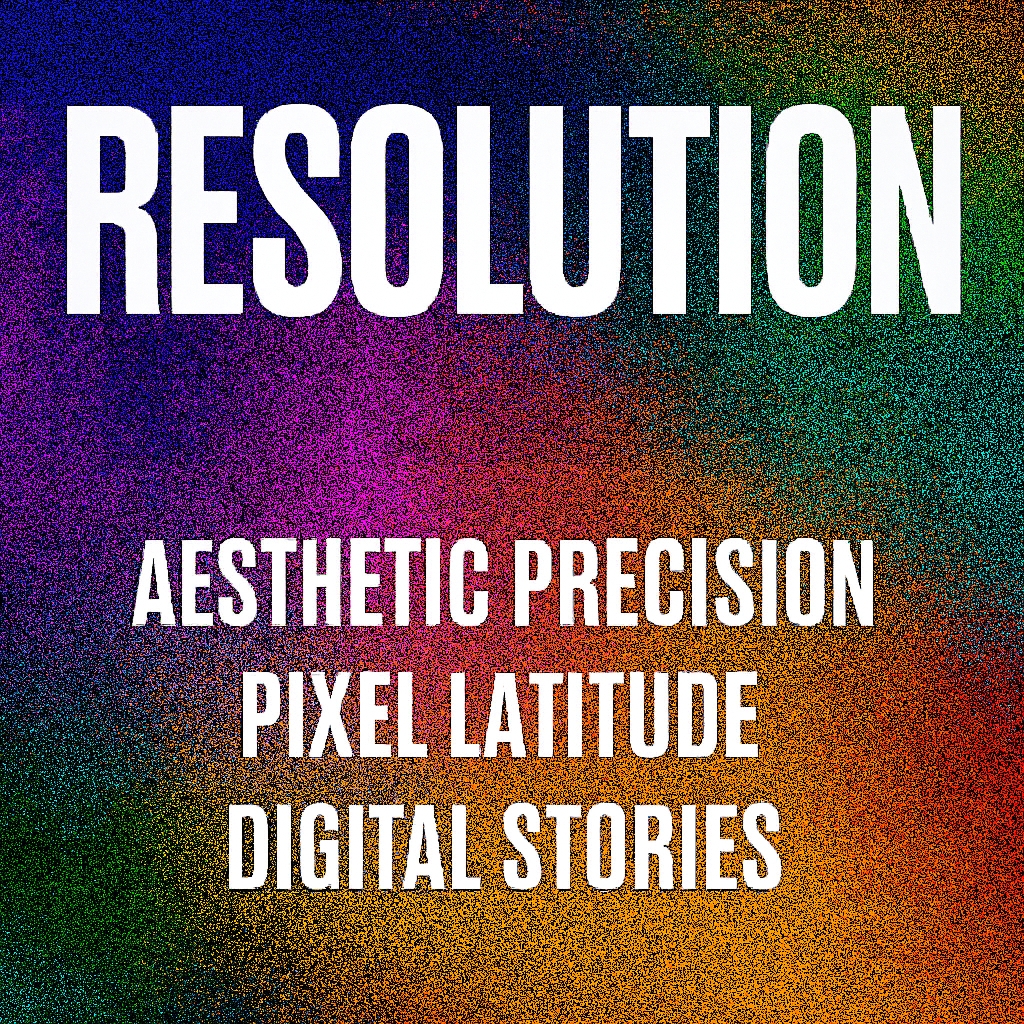
RESOLUTION AND ACCESSIBILITY
Resolution also affects who can access content and how. Lower resolutions require less bandwidth and are more inclusive in low-connectivity regions. They allow users with older devices or limited data to participate in digital culture. High-resolution formats demand faster internet, newer hardware, and more storage. This creates a digital divide between users with different resources.
Accessibility is not just about disability—it is about infrastructure. Resolution can either democratize or restrict access. Platforms often offer multiple resolution options to accommodate diverse users. Accessibility also includes readability—text and subtitles are clearer in higher resolutions. Visual impairments may be mitigated by sharper images and better contrast. Resolution affects how inclusive a visual experience can be. It shapes who gets to see, feel, and understand. Accessibility is emotional as well as technical. Resolution must be scaled with equity in mind. It is a tool of inclusion or exclusion.
RESOLUTION AND ACCESS EQUITY
| Resolution | Bandwidth Need | Device Compatibility | Accessibility Level |
|---|---|---|---|
| 144p | Minimal | Universal | Basic |
| 360p | Low | Legacy devices | Moderate |
| 720p | Medium | Most smartphones | High |
| 1080p | High | Modern devices | Very high |
| 4K+ | Very high | Premium hardware only | Limited |
RESOLUTION AND ARCHIVAL FORMATS
Archiving film and video requires careful resolution selection. Higher resolutions preserve more detail and future-proof content. However, they also require more storage, processing, and maintenance. Archival formats must balance fidelity with sustainability. 2K and 4K are common standards for professional preservation. They allow for restoration, remastering, and reformatting. Lower resolutions may be used for metadata, previews, or legacy content. Archiving is not just about saving—it is about preparing for reinterpretation. Resolution affects how future audiences will experience the past.
It shapes what is remembered and how. Archival formats must also consider accessibility and longevity. File formats, codecs, and compression all interact with resolution. Preservation is both technical and symbolic. It affirms that visual culture matters. Resolution becomes a form of historical fidelity. Archiving is memory encoded in pixels.
ARCHIVAL RESOLUTION STRATEGIES
| Resolution | Archival Use | Preservation Value | Storage Demand |
|---|---|---|---|
| 480p | Legacy content | Low | Minimal |
| 2K | Standard cinema archive | High | Moderate |
| 4K | Long-term preservation | Very high | High |
| 6K–8K | Restoration and remaster | Maximum | Very high |
| Proxy (360p) | Metadata and previews | Supportive only | Minimal |
CONCLUSION – RESOLUTION AS PSYCHOLOGICAL INFRASTRUCTURE
Resolution is not just a number—it is a framework for perception. It defines how we see, feel, and remember. From 144p to 8K, each format carries symbolic, emotional, and technical weight. Resolution shapes narrative, pacing, accessibility, and memory. It is the architecture of digital experience. Higher resolutions offer immersion, nuance, and emotional depth. Lower resolutions offer speed, access, and simplicity. Each has its place in the visual ecosystem.
Resolution is a choice about what to show and what to hide. It encodes identity, culture, and emotion. The screen becomes a mirror of symbolic scale. Pixels are not just data—they are meaning. Resolution is how we translate light into feeling. It is the infrastructure of digital storytelling. And it will continue to evolve as our emotional and technological needs expand.
JOIN THE DISCUSSION
How does resolution shape your emotional connection to film, media, or memory? Which formats feel immersive, and which feel limiting in your creative or viewing experience? Have you ever noticed how pacing, symbolism, or accessibility shift with pixel density? What resolution do you use most often—and what does it say about your workflow or values?
#ResolutionPsychology #PixelDepth #VisualClarity #SymbolicArchitecture #DigitalMemory #ScreenImmersion #EmotionalFidelity #CinematicPrecision #BandwidthAndBelonging #FrameByFrameMeaning #8KRealism #144pMinimalism #StoryInPixels #EditorialVision #TechAsEmotion #VisualInfrastructure #SymbolicScale #NarrativeResolution #ScreenAsMirror #MemoryEncoded
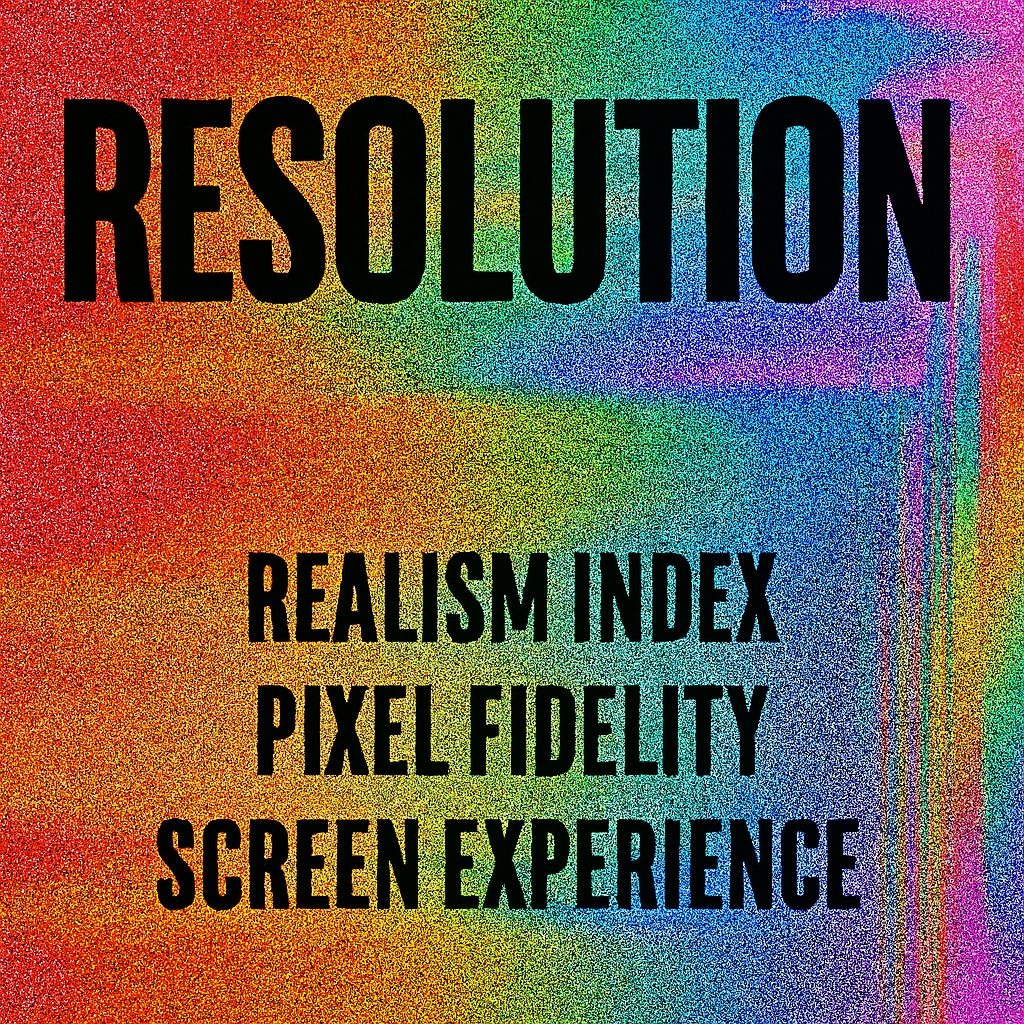

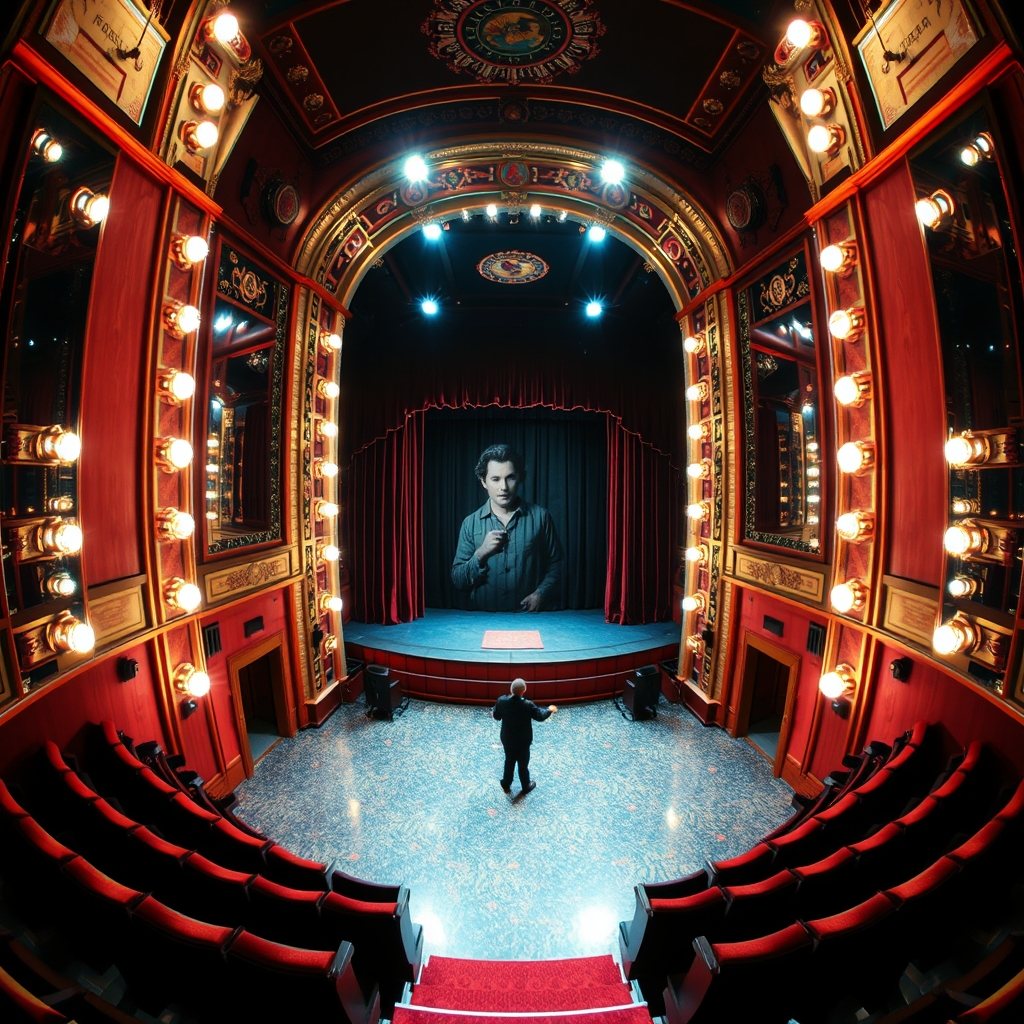
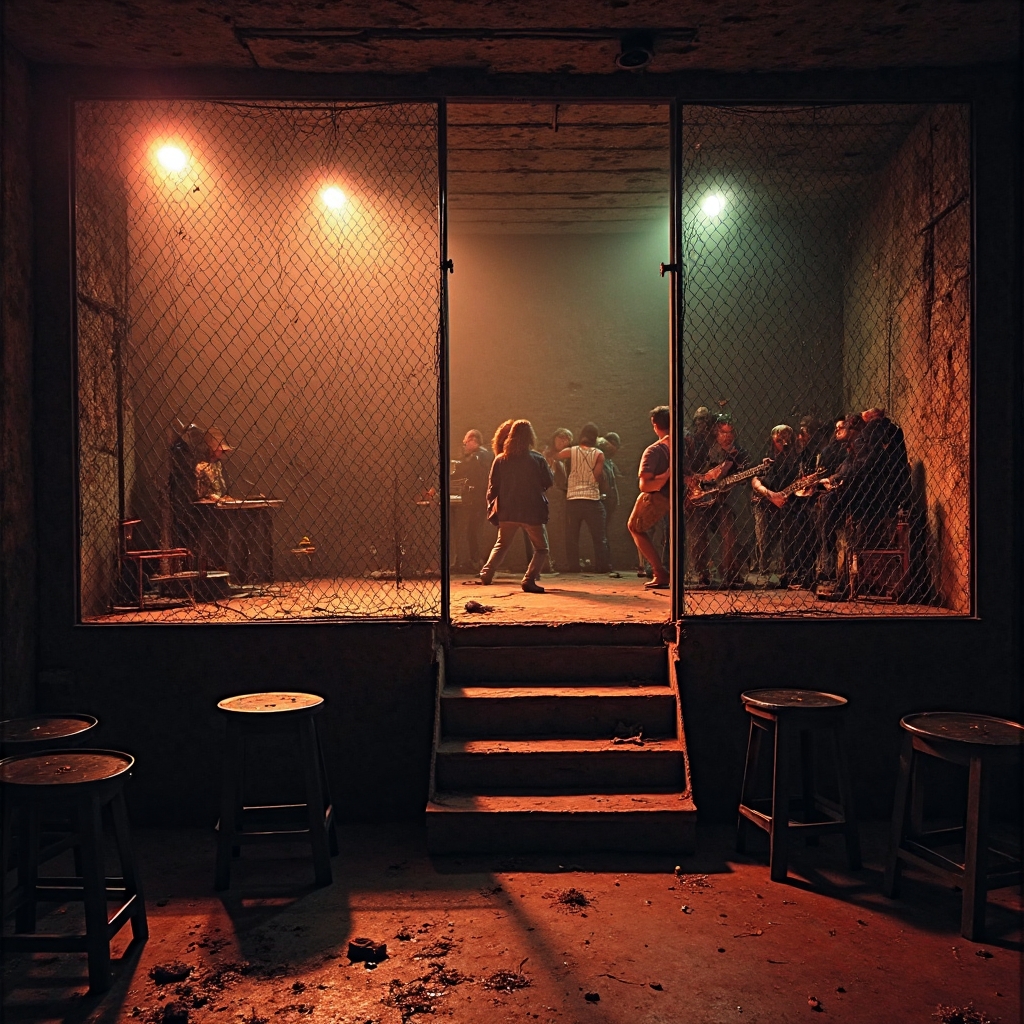


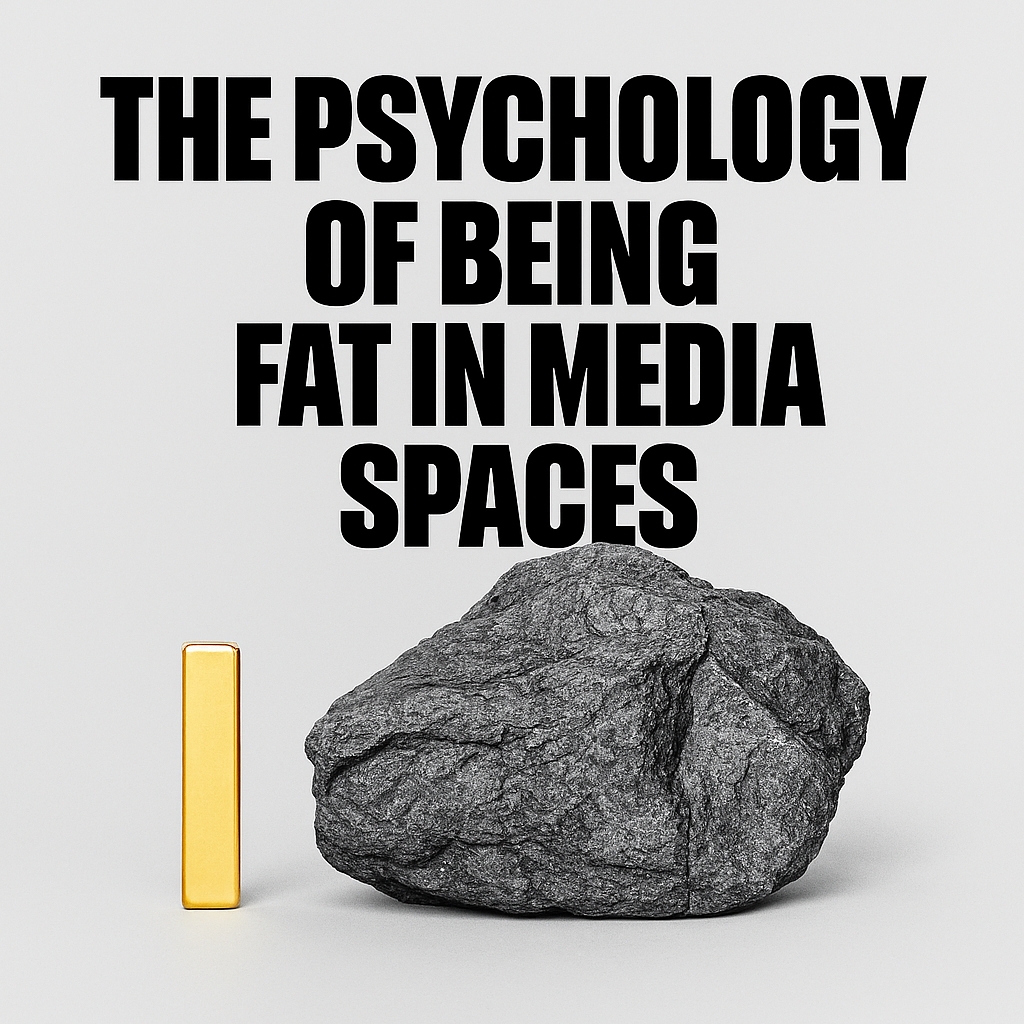
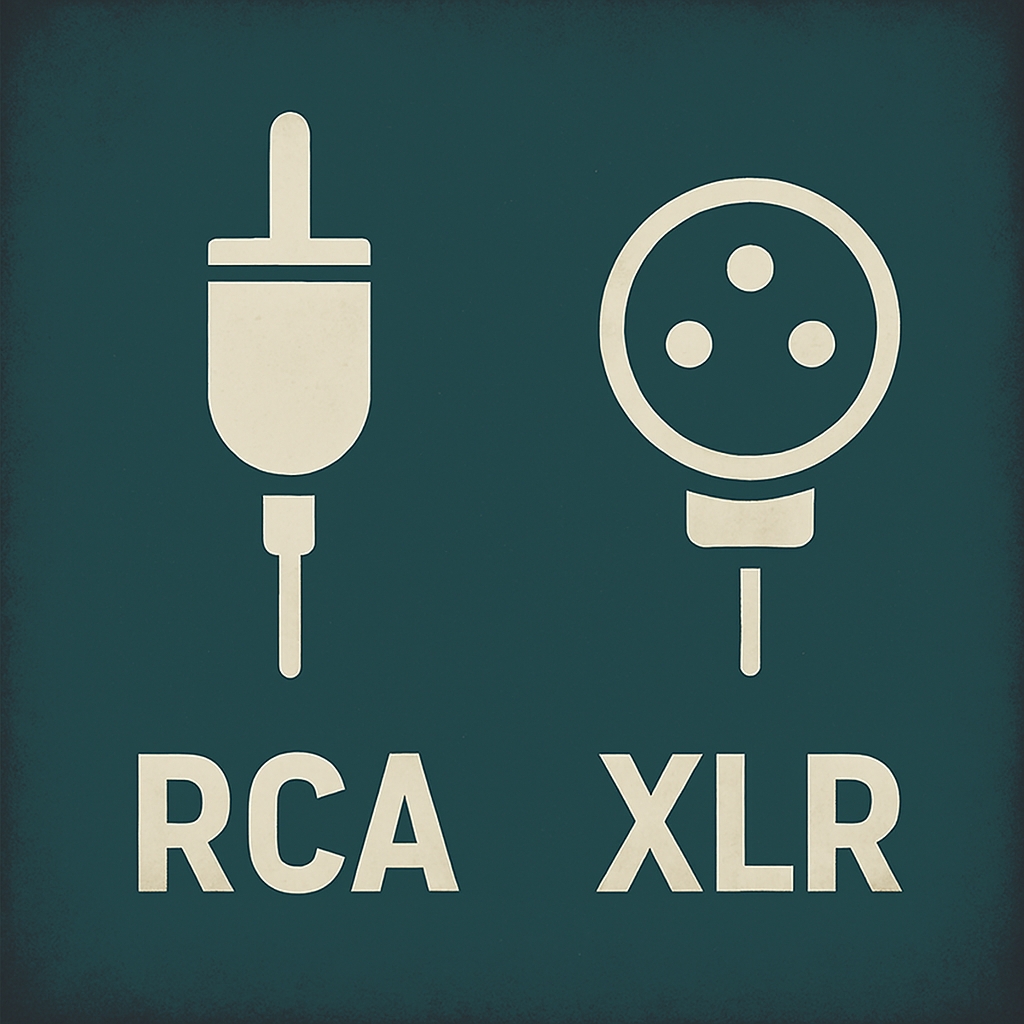


Leave a Reply